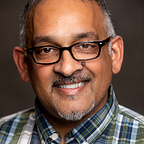How Do We Create a World Where Children Daydream About Math?
When I taught at the International School of Lausanne in Switzerland in 2005, the school had a very strict policy of banning ipods in the classroom. Even though I was a new teacher to the school, I wrote a very long letter to the Director of the school telling him why students should be allowed to listen to music in at least my math classes. Somewhat surprisingly, Simon Taylor, wholeheartedly accepted my argument, and the ban was no longer in place, and up to the discretion of the teacher.
One of the early fruits of this decision came soon after in my 10th grade class. A student named Luciana, was listening to music, smiling and staring out the window. Naturally, she wasn’t doing any math work at that moment, and what she could have been thinking/daydreaming about is pretty irrelevant.
The fact that music and a window seat to some nice Swiss scenery became part of her escape is what captivated me.
That was over 15 years ago.
I am lucky. At the age of 56, I still daydream, and much of my colorful landscape of musing involves mathematics.
Sometimes I am noodling on a problem. Sometimes I imagine a world where newspapers around the world are announcing that The Riemann’s Hypothesis has finally been solved. Sometimes I imagine going back in time before paper was regularly available and trying to picture what it must have been like to receive mathematical knowledge only through poetry — as was the case sometimes with Indian mathematics. Sometimes I wonder if there is a magical library that has enough space to house books to contain all the digits of something like Graham’s Number.
All this daydreaming about mathematics has had a collective effect of not just thinking about new ideas of teaching and learning mathematics, but more importantly, it has given me hours and hours of joyful escape that the world of fantasy provides.
The writing of this article was precipitated by an article that I just finished reading.
Gaiman’s almost clarion call for the well-being of the future to depend on avid reading and daydreaming, made me think how can we construct classrooms/schools/societies where some of the daydreaming space is taken up with mathematics.
Currently, it’s quite the opposite. Students daydream to get away as far as possible from the subject. Perhaps creating fictionalized worlds where mathematics roams around with mythic powers is something we should consider.
Fiction can show you a different world. It can take you somewhere you’ve never been. Once you’ve visited other worlds, like those who ate fairy fruit, you can never be entirely content with the world that you grew up in. Discontent is a good thing: discontented people can modify and improve their worlds, leave them better, leave them different.
And while we’re on the subject, I’d like to say a few words about escapism. I hear the term bandied about as if it’s a bad thing. As if “escapist” fiction is a cheap opiate used by the muddled and the foolish and the deluded, and the only fiction that is worthy, for adults or for children, is mimetic fiction, mirroring the worst of the world the reader finds herself in.
Neil Gaiman
Mathematics has been escapist non-fiction for many people — especially those in some of the bleakest situations life can offer. If mathematics is serving as an emollient here, then it surely can have even stronger therapeutic effects with the rest of us.
But, mathematics has to be uncaged. As well, our students and teachers have to uncaged. Daydreaming about mathematics is based on imagination and escapism.
However, it seems the health of the world depends upon our future generations being given permission to dwell, at least temporarily, in worlds which uniquely belong to them. And, if somehow they can intersect the world of mathematics in this free and open space that houses their boldest dreams and strongest identities, then maybe the healthiest mathematical ideas can be born here for our future…
